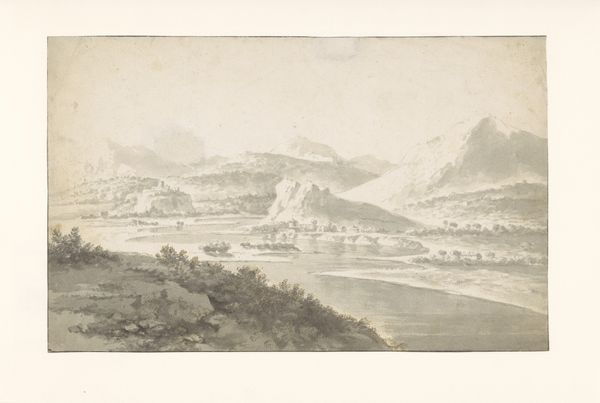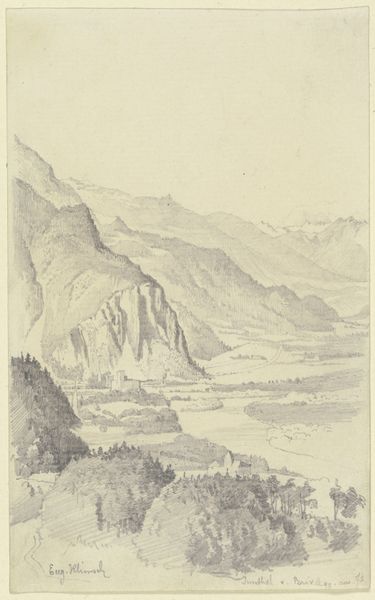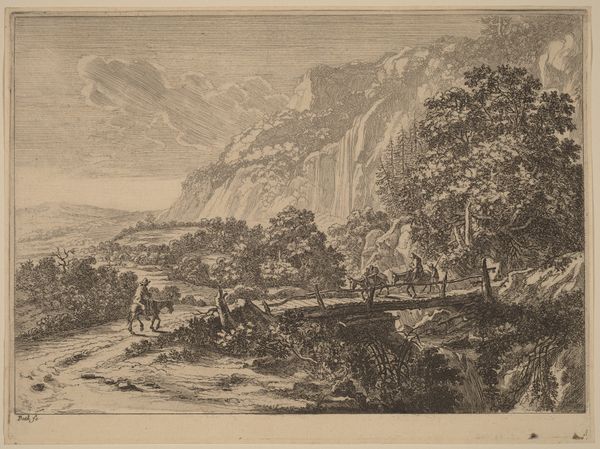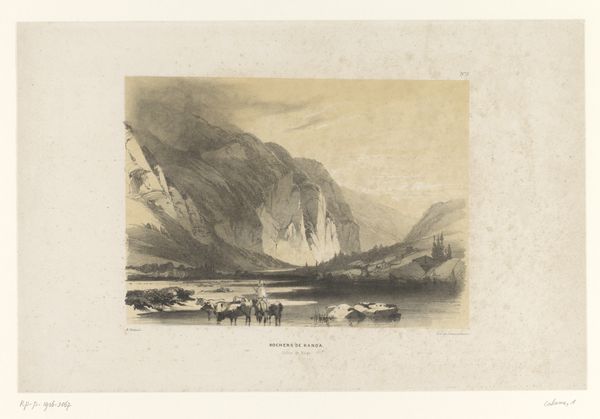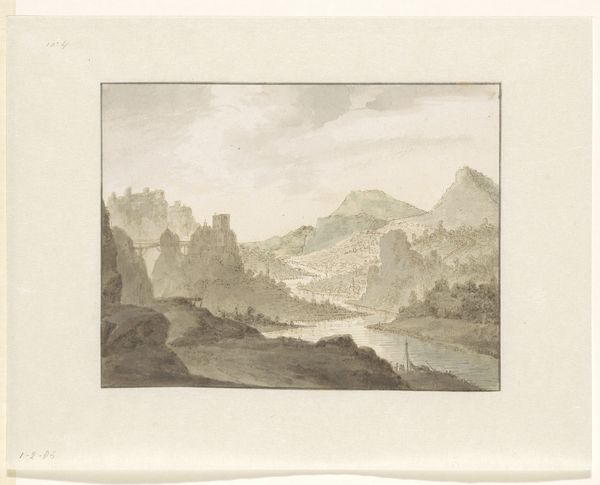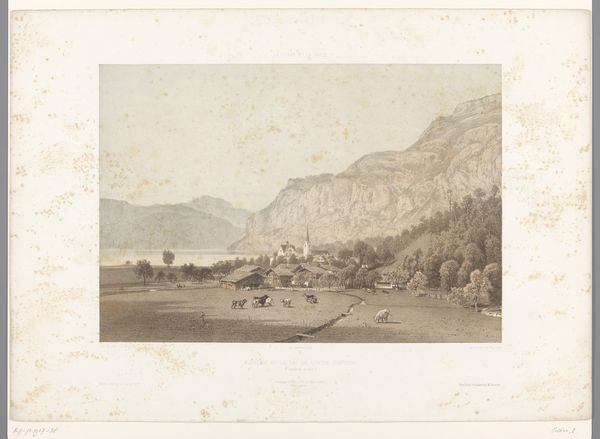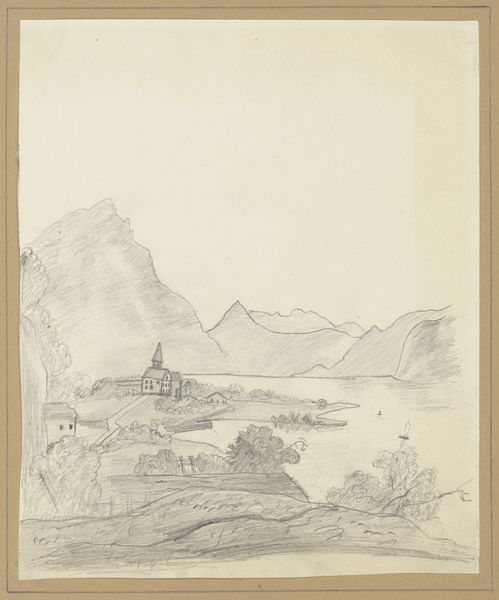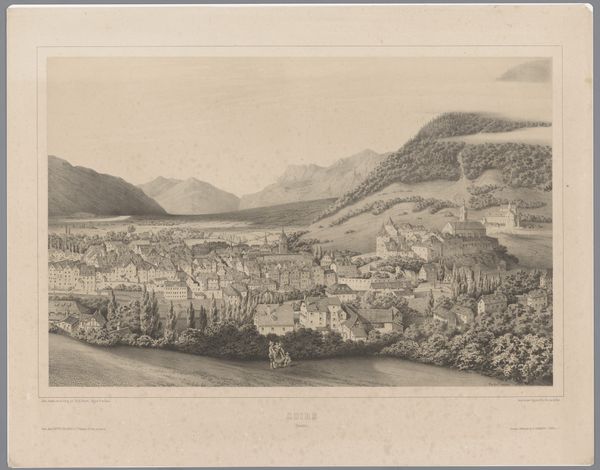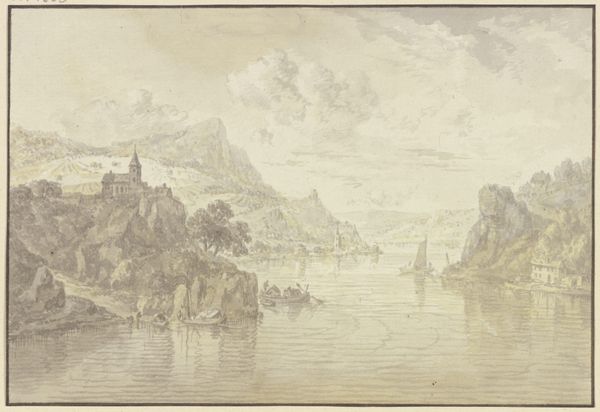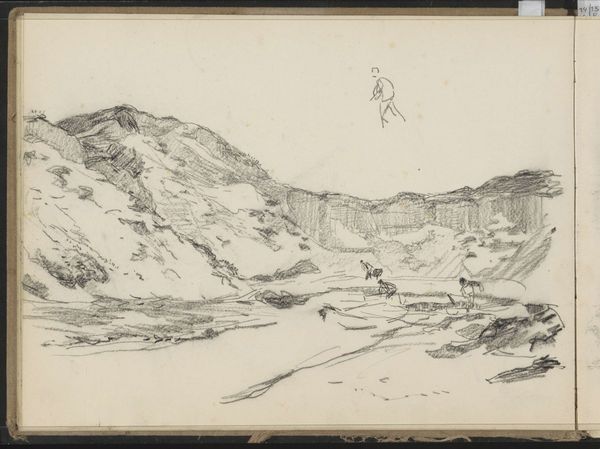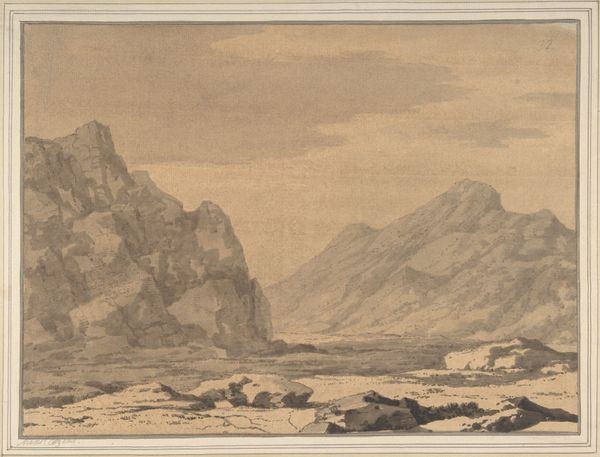
drawing, etching, paper, pen
#
drawing
#
dutch-golden-age
#
etching
#
landscape
#
river
#
etching
#
paper
#
pen
Dimensions: height 154 mm, width 235 mm
Copyright: Rijks Museum: Open Domain
Editor: So this is Jan Hackaert's "Bergachtig landschap," created sometime between 1639 and 1700. It’s a drawing with pen, etching and grey wash on paper. What strikes me most is its subdued mood, created by the almost monochrome palette, and how skillfully the artist renders distance. What symbolic meanings do you see embedded in this landscape? Curator: It's fascinating how landscapes become imbued with meaning, isn't it? Notice the bridge. Bridges often signify transitions, connections between worlds. The river it crosses can represent the flow of time, or even the subconscious. Then consider the mountains themselves, the "Bergachtig" part – symbols of permanence, of spiritual aspiration. But observe the delicate touch Hackaert uses; this isn't a triumphant or sublime mountainscape. It suggests more intimate reflection. Do you perceive a dialogue between the wildness of nature and the structured presence of civilization? Editor: Absolutely. The bridge and the distant town seem almost like intrusions on this serene wilderness. It’s a tenuous connection, hinting at the potential conflict between humanity and nature. Curator: Precisely. Dutch Golden Age landscapes often depicted an idealized harmony between people and the land. However, Hackaert's touch feels more wistful, perhaps even subtly melancholic. Consider how waterways serve to divide but also unify through transportation and trade routes. The mountains act like silent guardians or looming symbols that reflect on power and fragility. Editor: That’s a richer perspective than I initially considered. It highlights how landscape painting isn't just about pretty scenery, but about the symbolic relationship between humanity and the environment. Curator: And between the internal world and the external. Hackaert seems to ask us to contemplate our place within the vastness of time and nature. Editor: Well, this was an exercise of a close look! I'll carry a completely different view to the museum café.
Comments
No comments
Be the first to comment and join the conversation on the ultimate creative platform.
